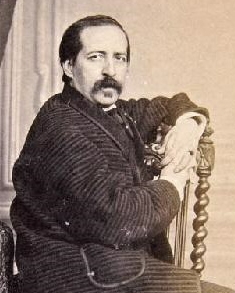Germán Hernández Amores facts for kids
Germán Hernández Amores (born June 10, 1823, in Murcia; died May 16, 1894, in Murcia) was a Spanish painter. He was known for his paintings of scenes from ancient Greek and Roman stories (Classical), myths, and the Bible. He was one of the few artists in Spain who used ideas from the German Nazarene movement, a group of painters who wanted to bring back religious art.
His Life as an Artist
Germán Hernández Amores started learning to draw in Murcia. His first teacher was Santiago Baglietto, a sculptor from Italy. After that, he went to a famous art school in Madrid, the Real Academia de Bellas Artes de San Fernando. There, he studied with well-known painters named José and Federico de Madrazo. To help pay for his studies, he drew pictures for books.
In 1851, Germán received a special scholarship that allowed him to travel to Paris, France. He studied art there with Charles Gleyre. Two years later, he got another scholarship, which let him live and paint in Rome, Italy, until 1857. While in Rome, he met several German painters from the Nazarene movement. Their style of art greatly influenced his own work.
In 1858, Germán won a Second Class prize at the important National Exhibition of Fine Arts in Spain. He won it for his painting of Socrates talking to Alcibiades. Later, in 1862, he won a First Class prize at the same exhibition. This time, it was for his painting called The Journey of the Virgin and Saint John to Ephesus. He continued to show his art at this exhibition until 1892, but he did not win any more prizes.
Later in his life, Germán Hernández Amores became a professor at a top painting school. In 1892, he was made a member of the Real Academia, which is a very respected art institution. His younger brother, Víctor Hernández Amores, was also a famous painter.
See also
 In Spanish: Germán Hernández Amores para niños
In Spanish: Germán Hernández Amores para niños



